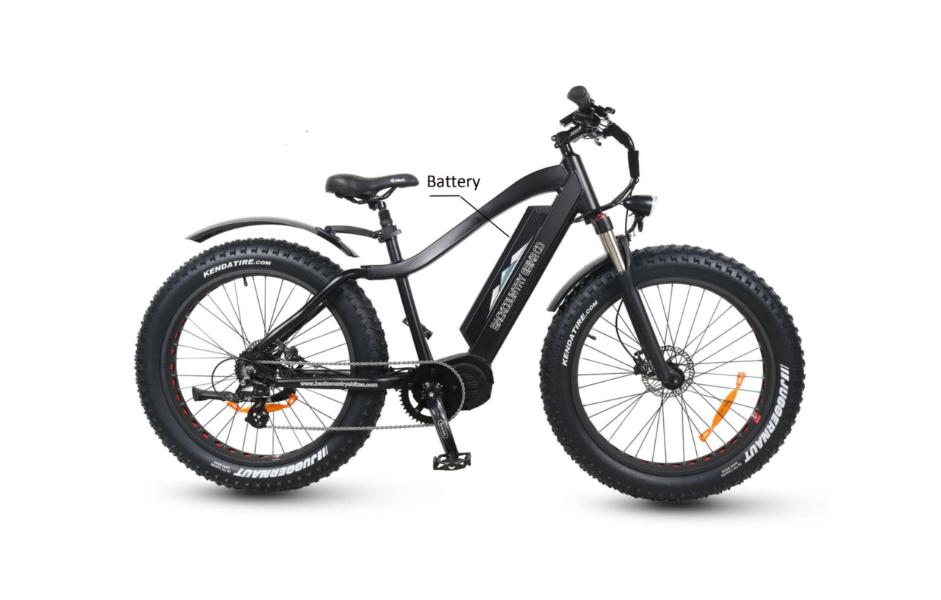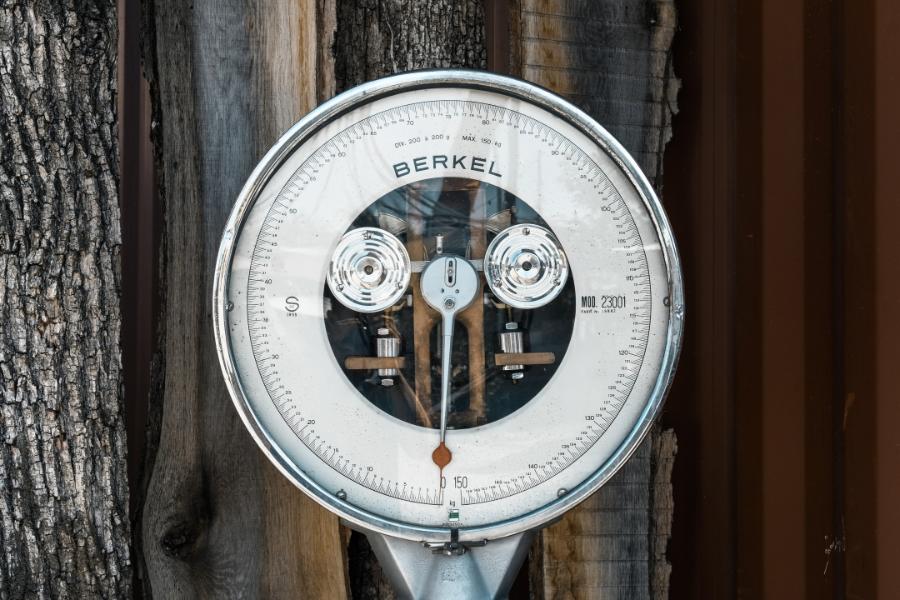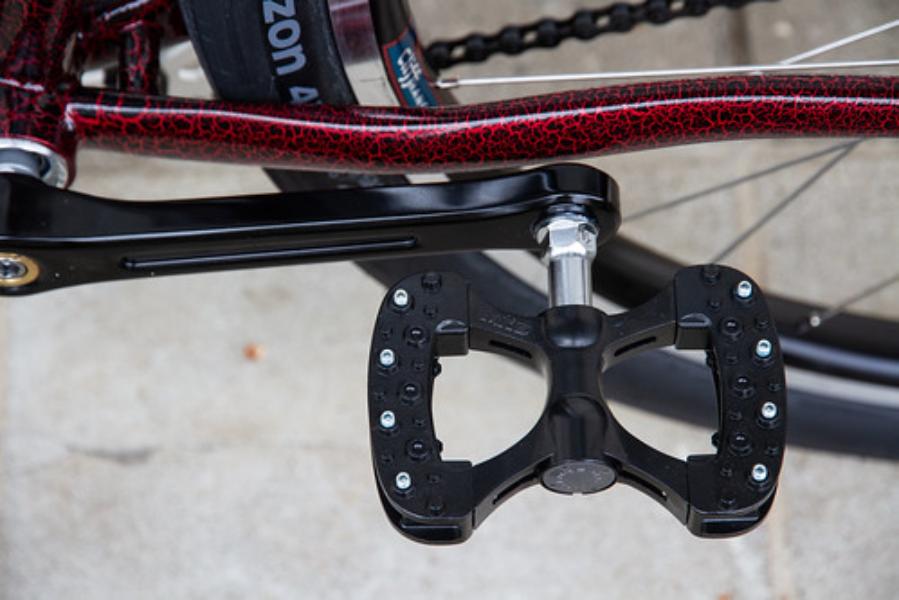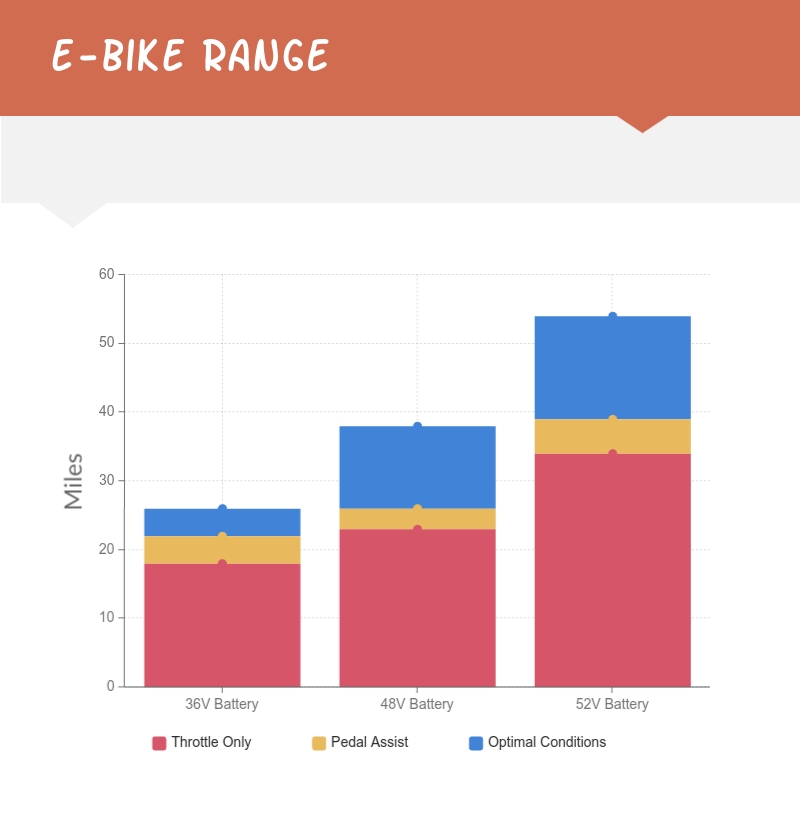Electric bikes are great for leisure and commuting alike. The benefits of a smaller carbon footprint, avoiding traffic and not having to work as hard as a regular bike demands are all very attractive prospects.
One main concern for many people, however, is exactly how far you can get on a single charge.
After all, if you’re going to run out of battery before you reach your destination, what’s the point?
A variety of factors will determine how far any specific electric bike (e-bike) can travel on a single charge, but you can expect to get anywhere between 30 miles (~50km) and 90 miles (~145km). Some e-bikes boast a range even greater than this.
Determining Factors
It can be helpful to understand why certain e-bikes will have a greater range than others, and what these things will mean for your overall user experience.
There are a lot of things that can influence the exact range of any given e-bike, but the following are some of the major factors that you can keep an eye out for.
The Battery

Photo Credit: Wikimedia Commons
The first and most obvious thing that will impact how far the bike can travel is the battery. If you don’t have a background in electronics, a lot of the figures and terms can be pretty confusing to figure out.
The two main terms you will come across are volts, which will be represented by ‘V’ and amp-hours, which will be represented by ‘Ah.’
A fair bit of complicated math is involved in exactly how that correlates with battery life but generally speaking the higher those two figures are, the further you’ll get on a single charge.
Weight

Photo Credit: Unsplash / Vincent Ghilione
Another influential feature is the weight. How much the electric bike, cargo, and rider weigh combined will impact the overall maximum distance that you can travel.
Electric bikes tend to be a fair bit heavier than their non-electric counterparts, so it is important to pay attention to how much the e-bike you are purchasing weighs.
Depending on the type of e-bike you are looking at, you will encounter heavier and lighter models. For example, off-road e-bikes, or e-bikes designed to carry a decent amount of cargo will tend to be heavier than e-bikes designed for commuting.
Pedal Power or Throttle

Photo Credit: Flickr
If you’re looking at an e-bike that is either Class 1 or Class 3, you don’t need to worry about this section too much, as these bikes don’t come with a throttle. If you’re looking at a Class 2 e-bike however, this will be important.
It will reduce the overall range of the e-bike if you use the throttle for long periods of time. This is because it takes more power from the battery than when you are pedaling.
Many e-bikes also gain some battery charge from the energy of your pedaling, which does not happen when you’re only using the throttle.
Terrain
If you’ve ever had to pedal a regular bike up a steep hill you know just how painful it can be and just how much energy it takes to get to the top! The same principle applies to your electric bike.
If you’re going over rough terrain, or there are a lot of hills and obstacles in your way, that can reduce the overall range that your e-bike can attain.
On the other hand, if you have smooth city streets to ride on or plenty of downhill on your journey then your e-bike will likely get you quite far!
Environmental Conditions
Things like wind and weather can also impact how far you can get. A strong tailwind can help you, and a strong headwind will hold you back.
Temperature is also an important factor. Cold weather will make the battery drain faster than it would in a warmer environment.
Similarly, wet weather can impact your overall range. If your e-bike has to work harder to propel you over slippery surfaces or through puddles, that can reduce your range.
Other Factors
A variety of other factors also influence the total range of your e-bike. These include tire pressure, the type of tire, the age of the battery, and your average speed.
All of these factors and even more will have an impact one way or another on your total range. There is no concrete formula that will tell you exactly how far you’ll get on any given electric bike until you take it for a test run.
Most manufacturers and retailers will have a range listed on their website when you’re looking at an e-bike. This range is a good starting point to figure out how far you can get, though when you get the final product, it is a good idea to take it for a test run and see for yourself.

Photo Credit: Visme
How to Find a Good E-bike
With all of those factors to consider, it can be daunting to even start looking at e-bikes. Luckily, there are a few easy tricks you can use to make sure it will be a good bike for you.
As stated above, the higher the figures listed on the battery, the further you’ll get on a single charge. Most e-bikes you’ll come across will be between 36 and 52 volts. The higher the voltage batteries tend to be on heavier duty e-bikes.
While weight can have an impact on the total range, most website estimates will have factored this in when measuring their range.
The main thing for you to focus on is how much cargo you intend to carry on the bike, along with yourself. If you plan to do grocery shopping and carry it home on your e-bike, for example, this will impact your total range.
If your e-bike comes with a throttle, it’s important to note that most range estimates will have been made based on pedal power. If you want to get further, favoring pedaling over the throttle will help.
Terrain and environment are largely out of your control, however, there are e-bikes designed specifically to tackle rougher terrain so if you are concerned that your local area will have a big impact on your range, one of these e-bikes might be best.
It is also a great idea to make sure that once you have your e-bike of choice, that you stay on top of basic maintenance and ensure that you’re riding on the recommended tire pressure for maximum range.
The higher the pressure, the further you’ll get, but this will give you a much rougher ride. If you don’t need to maximize range, slightly lower tire pressure can really give your joints a break.
We’re Here to Help!
We know that getting into the world of electric bikes can be a little daunting, so we are always available to help!
We have tons of great articles to answer some common questions and to give you some great advice on things you might not even have thought about.
If you have a question that we haven’t answered yet, feel free to get in touch or leave a comment and we will do our very best to help you out!
Feel free to share this article with any friends who might be interested in this great form of transport.
After all, the only thing more fun than getting out into some fresh air on your electric bike is doing it with a friend!


